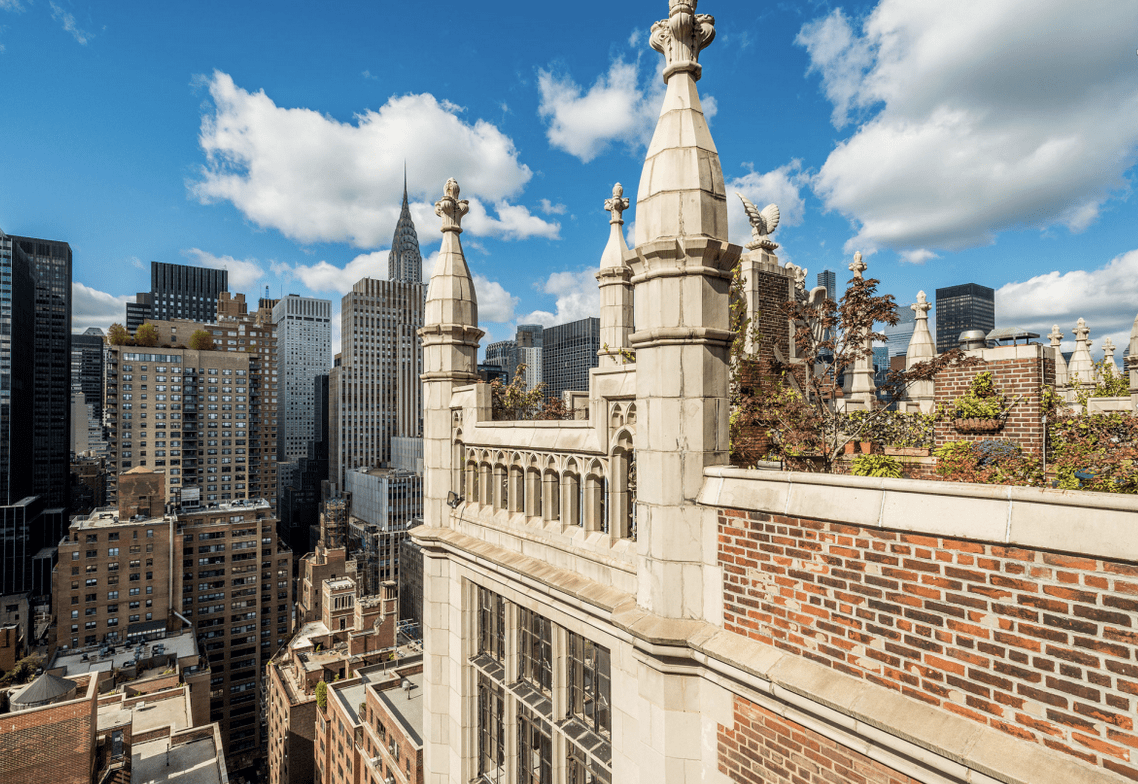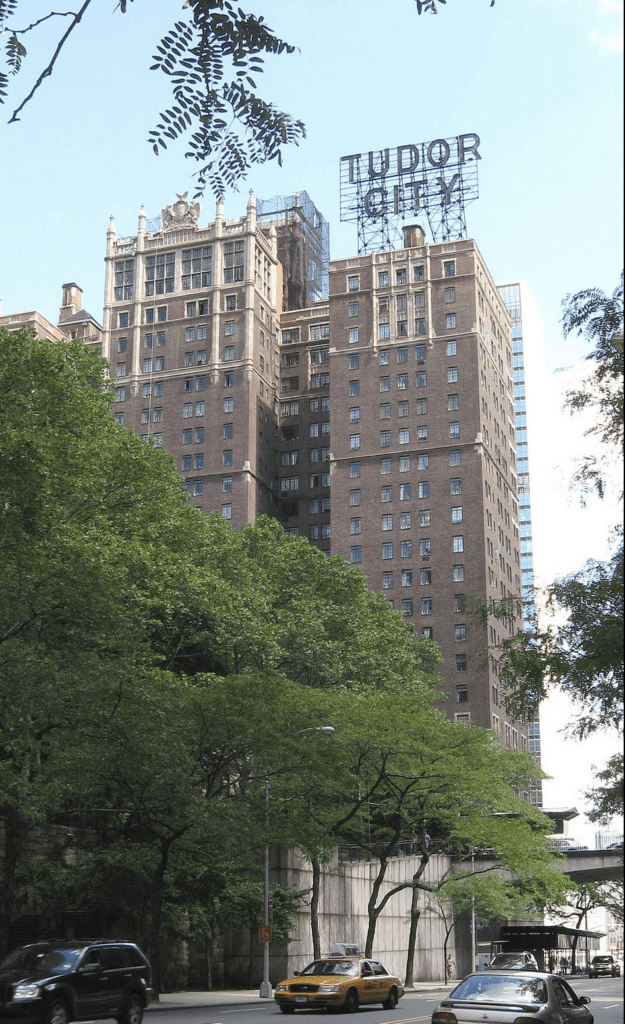Search Posts
Recent Posts
- Rhode Island Weather for April 29, 2024 – John Donnelly April 29, 2024
- Advocates, providers on new Nursing Home mandates – Herb Weiss April 29, 2024
- Business Beat: Abe Cohen new VP of Business Development for RI, Marquis Health Consulting April 29, 2024
- Business Monday: Working and playing into your 90s – Mary T. O’Sullivan April 29, 2024
- Rhode Island Weather for April 28, 2024 – John Donnelly April 28, 2024
Categories
Subscribe!
Thanks for subscribing! Please check your email for further instructions.

Behold, NYC’s Tudor City – David Brussat
by David Brussat, Architecture Here and There, contributor
Photo, top: Top levels, including roof terrace, of Windsor Tower, one of 13 in Tudor City. (Wikipedia). Creative Commons Attribution-Share Alike 4.0 International license.
I had lunch today (by now, yesterday) at Maven’s, a newly opened Jewish delicatessen in that plaza just off Hope Street as it becomes East Avenue, in Pawtucket. I’ve eaten there once before with my wife, Victoria – delicious, though not without some small kinks to be worked out – and this time I was by myself and talked with my table neighbor. We spoke of Manhattan, and he told me he’d once lived in Tudor City, near the United Nations complex. I said I was familiar with the name but not with its appearance. So when I got home I looked it up on Wikipedia.
I am no longer abashed to mention that. I’ve spent a lot of time in Wikipedia, since I’m writing a book and often need a quick refresher, or to double-check my fading memory. It has been criticized as not unbiased, but most of its articles on many subjects seem to be quite objective. I think that, as an architecture critic, I can be trusted to spot bias in articles with architectural content, such as its in-depth treatment of Tudor City. I saw none in this article. But there was a heavy bias, if you can call it that, for detail.
Thirteen separate buildings make up the complex, 12 of which were completed between 1927 and 1930; Tudor Gardens, the 13th, was finished in 1956. They sit between 41st and 43rds streets on land mainly of tenements and slums, which were demolished. It was farmland until the mid-1800s, part of acreage known as Turtle Bay Farm. The United Nations complex sits just to its east. Grand Central Terminal is to its west. Tudor City is the first residential skyscraper complex in Manhattan, and one of the first in the world. The heights of the 12 original buildings range from several of ten stories up to 32 stories for the Woodstock Tower, with 454 apartments. The original complex featured two large parks, though what their status is today I have no idea. Wikipedia describes the exterior design fully. Its features hark back to the Tudor and Elizabethen periods of England. My term for this sort of embellishment-heavy architectural description is “architecture porn.” This is a good example, though it is partial:
Generally, the lower stories of each building were clad in sandstone and limestone, while the upper stories were clad in reddish-brown brick with terracotta trim. The complex’s designers used a broad range of Tudor Revival details, including towers, gables, parapets, balustrades, chimney stacks, oriels, bay windows, four centredarches, pinnacles, quatrefoils, fish bladder moldings, Tudor roses, portcullises (a symbol of the Tudor sovereigns), and rampant lions carrying standards.

I have retained the links for readers’ pleasure and instruction. I wish there were a link for “fish bladder moldings.” And, alas, Wikipedia does not describe the decoration of the apartments, which could house up to 5,000 residents, many in studios, some with up to four or five bedrooms. The total population presumably includes those who stayed at the complex’s hotel, a separate building.
My familiarity with Tudor City may be the result, exclusively, of its sign, reading “Tudor City,” atop Prospect Tower, which I’ve occasionally espied as I stroll along Manhattan’s streets on my occasional visits. Originally there were two signs; one was removed when it was blocked by another building, the company that owned Tudor City wanted to remove the second one as well. They were blocked by the landmarks commission – one of its few positive actions, in my recollection, though I probably don’t hear much about its no doubt many positive actions. I just hear about its mistakes, most of which are tremendously dissatisfying. Oh well, as they say, so it goes.
But I am happy to bring the Tudor City architecture porn to readers saddened by the declining pace of my posts.
___
To read other articles by David Brussat: https://rinewstoday.com/david-brussat-contributing-writer/

My freelance writing and editing on architecture and others addresses issues of design and culture locally and globally. I am a member of the board of the New England chapter of the Institute of Classical Architecture & Art, which bestowed an Arthur Ross Award on me in 2002. I work from Providence, R.I., where I live with my wife Victoria, my son Billy and our cat, Gato. If you would like to employ my writing and editing to improve your work, please email me at my consultancy, [email protected], or call (401) 351-0451.
